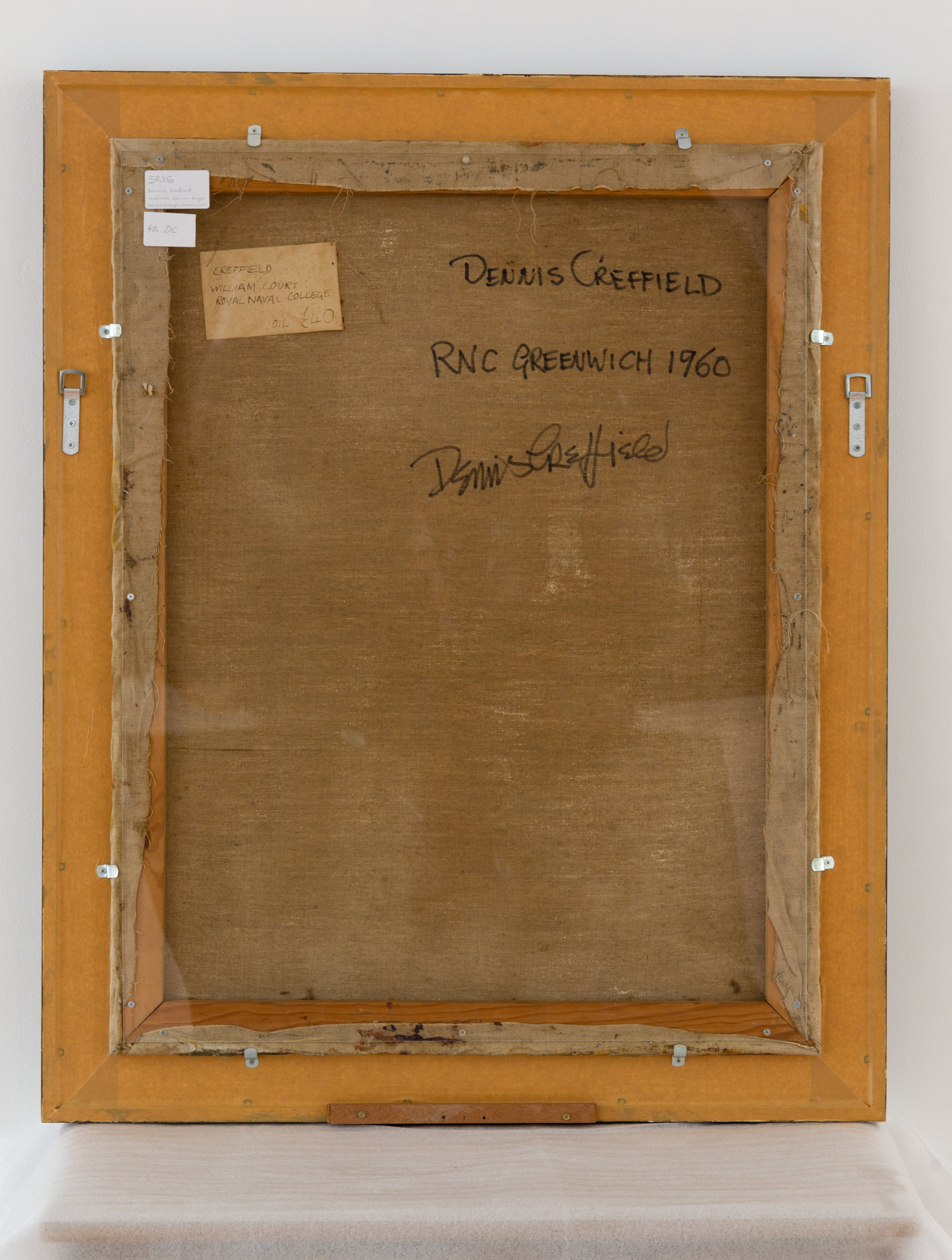The frames and mounts of paintings are themselves unique canvases of hidden detail. Our tendency to overlook the effects of framing discounts their having existed for as long as pictures have been mobile. The French post-structuralist Louis Marin described the picture frame as a device which “renders the work autonomous in visible space”, putting “representation into a state of exclusive presence.” When framed, the painted picture becomes a worthy object of contemplation and demands absolute attention. Simultaneously, the frame effaces itself, becoming obsolete in the eyes of the viewer, entirely separate from the work of art it borders.
While frames have historically been designed by artists to accentuate their pictures or chosen by patrons and museums in line with current fashions, frames are primarily physical supports which protect paintings against their surroundings. The frame’s role is one of mediation. Paintings derive the visual autonomy identified by Marin from the exclusive physical and symbolical safety the frame provides, a condition which relates back to what Walter Benjamin had previously characterised in 1936 as the ‘aura’ of the work of art.
Rooted in an object’s authentic presence in time and space, and the physical changes it has undergone since its creation, the ‘aura’ is perhaps most legible in the frame of a painting which has both facilitated and borne witness to the work’s movements between people and institutions. For Benjamin, the irreproducibility of these conditions reveals the power of a work of art as historical testament.
By documenting the backs of paintings and drawings, this series brings the Borough Road Collection Archive into focus as being comprised of mobile and changeable three-dimensional objects that have each passed through different hands to arrive in the current collection. The diverse materials used by the artists themselves, the size and style of frames, and the presence of various labels and notations identifying craftsmen and galleries together constitute individual time capsules to be unpacked and interpreted. Utilising reproductive technology in this post-internet context serves to re-articulate rather than wither the ‘aura’ of the artworks in the collection, exhibiting a side to them rarely seen by the public.
